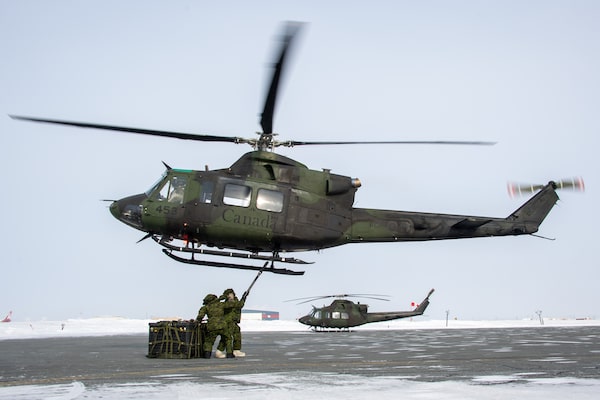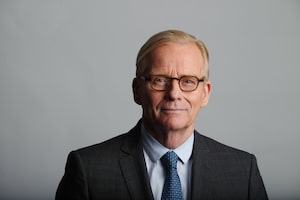
Canadian Armed Forces soldiers deployed during Operation Nanook-Nunalivut conduct training in Rankin Inlet, Nunavut on March 12, 2023.Corporal Sarah Morley/Handout
A sharper focus on the Arctic in Ottawa’s defence policy is a strategic move welcomed by Western allies, Canada’s top soldier says, as Russia and China contest this increasingly pivotal region, where global warming is opening the Northern Sea Route to shipping and military manoeuvres.
General Wayne Eyre, Chief of the Defence Staff, acknowledged that the $8.1-billion over all committed by the government to defence spending over the next five years falls short of the NATO spending target of 2 per cent of annual economic output. Still, he says the new money will help a military long neglected by governments of various political stripes.
“Is this everything we need? No; but it’s a good start,” he said in an interview. “My morale was boosted when we got this through the goalpost.”
But Gen. Eyre also said he is unsure whether the military will see all of the $8.1-billion because the government is also imposing spending cuts that will reach $900-million annually within several years. At this point, he remains unsure of the net impact.
“Our finance staff are asking a lot of questions and still trying to figure that out and determine what this actually means,” he said. “We’ll have to clarify over the next couple of weeks as the finance staff crunch the numbers.”
The defence policy update, released April 8, and named Our North, Strong and Free, has been kept under wraps since 2022 as the government debated what should be included.
The policy calls for a fleet of early-warning aircraft and tactical helicopters, maritime sensors to detect missiles and ships as well as a satellite ground station in the Arctic and expanded runways and port facilities in the region.
Over the years, the Canadian Armed Forces has been hampered by recruitment shortfalls and procurement delays that have put its force readiness at risk and pushed back critical equipment upgrades. Although there is no timeline for equipment purchases, the update pledges to look at options to replace Canada’s aging submarines, purchase new light armoured vehicles and tanks and acquire ground-based air-defence systems.
Gen. Eyre said he’s pleased that the Liberal cabinet recognized the importance of the Arctic in this update, a region where the United States and the North Atlantic Treaty Organization have pressed Canada to step up its military preparedness.
Last August, rivals Russia and China conducted joint exercises in the Bering Sea off the coast of Alaska. Russia has been building modern military bases and has nuclear submarines and a fleet of 13 polar icebreakers. China, which has declared itself a near-Arctic state, has two medium-strength icebreakers and is building an even larger, more powerful vessel. Beijing wants to use the Northern Sea Route through Russia’s Arctic to import energy and export goods.
Gen. Eyre said the policy update is “welcomed by our allies. For far too long, we have been off in the Arctic,” he said. “Our hold on the Arctic is not a given.”
Ottawa said it will add $73-billion in net new defence spending over the next 20 years. Of that, $8.1-billion will roll out in the next five years. That will increase Canada’s defence spending to 1.76 per cent of gross domestic product in 2029-30, according to the update. But that would still fall short of NATO’s 2-per-cent target. The alliance last estimated Canada’s military spending to be 1.33 per cent of GDP.
Gen. Eyre said he’s hopeful that the policy gives him the leeway to recruit more young people to military life. What is meaningful to see, he said, is how Canadian soldiers based in Britain, Poland and Latvia are training Ukrainians to fight the Russians.
“This young kid tells me, ‘Sir, this is the most meaningful thing we ever did. These Ukrainians that we’re training, they’re going to be in combat within weeks of finishing with us,’ ” Gen. Eyre recalled.
 Robert Fife
Robert Fife Steven Chase
Steven Chase